How to Prune a Plum Tree: From Juvenile Foliage to Juicy Harvest
An annual trim makes a big difference in the health of your harvest


Plum trees make for a delicious home orchard, but they’re not always the easiest to prune. This tree type requires a lot of shaping for a healthy harvest. Luckily, if you’re an avid gardener, you probably already have everything you need in your tool shed. This guide will show you how to prune a plum tree at every growth stage.
Why Do I Have to Prune My Plum Tree?
There are a lot of reasons you should prune your plum trees. Most hobbyist gardeners know that pruning shapes your tree in a way that encourages healthy growth and leads to a healthier harvest. With plum trees, you can actually prune to discourage growth, too. It’s all about strategy. Overall, pruning can help:
Produce more fruit
Produce larger fruit
Shape your tree
Increase ventilation, which prevents disease and pest infestation
Reduce shading, which encourages flowering
Keep your tree at a manageable height
Limit the overproduction of fruit, which could damage branches
How Much Does It Cost to Prune Plum Trees?
Generally, tree pruning costs somewhere between $450 and $1,400, but you could pay as little as $75 to prune a small sapling. This pricing is similar to the cost of tree trimming, but if you do the job on your own, you’ll only have to spring for the tools.
When to Prune a Plum Tree
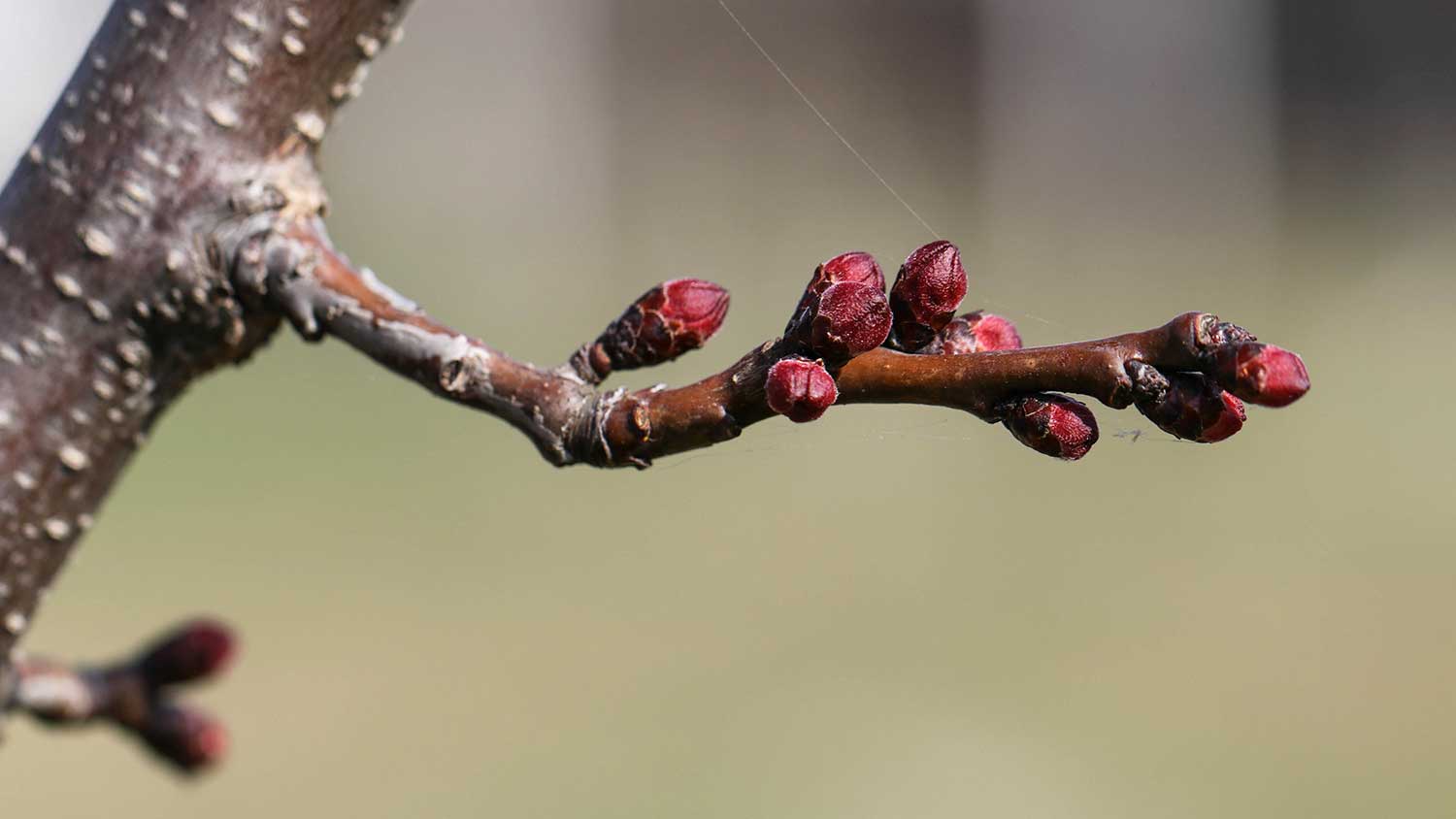
Timing is the foundation of pruning—but the best time to prune plum trees depends on maturity and fruit production. Generally, you’ll want to prune plum trees every year in early spring, right before you start seeing green growth peeking out of the buds (a period known as bud break). Pruning plum trees in early-to-mid winter or autumn leaves them vulnerable to silver leaf disease, insect infestation, and frost damage.
Once a tree is established, some may choose to prune in early summer—but do so before July to limit the risk of frost damage. Summer pruning reduces growth (so your tree stays at a manageable size) and future harvests (so your scaffold branches don’t snap under the weight of too much fruit). Avoid pruning your tree while it flowers.
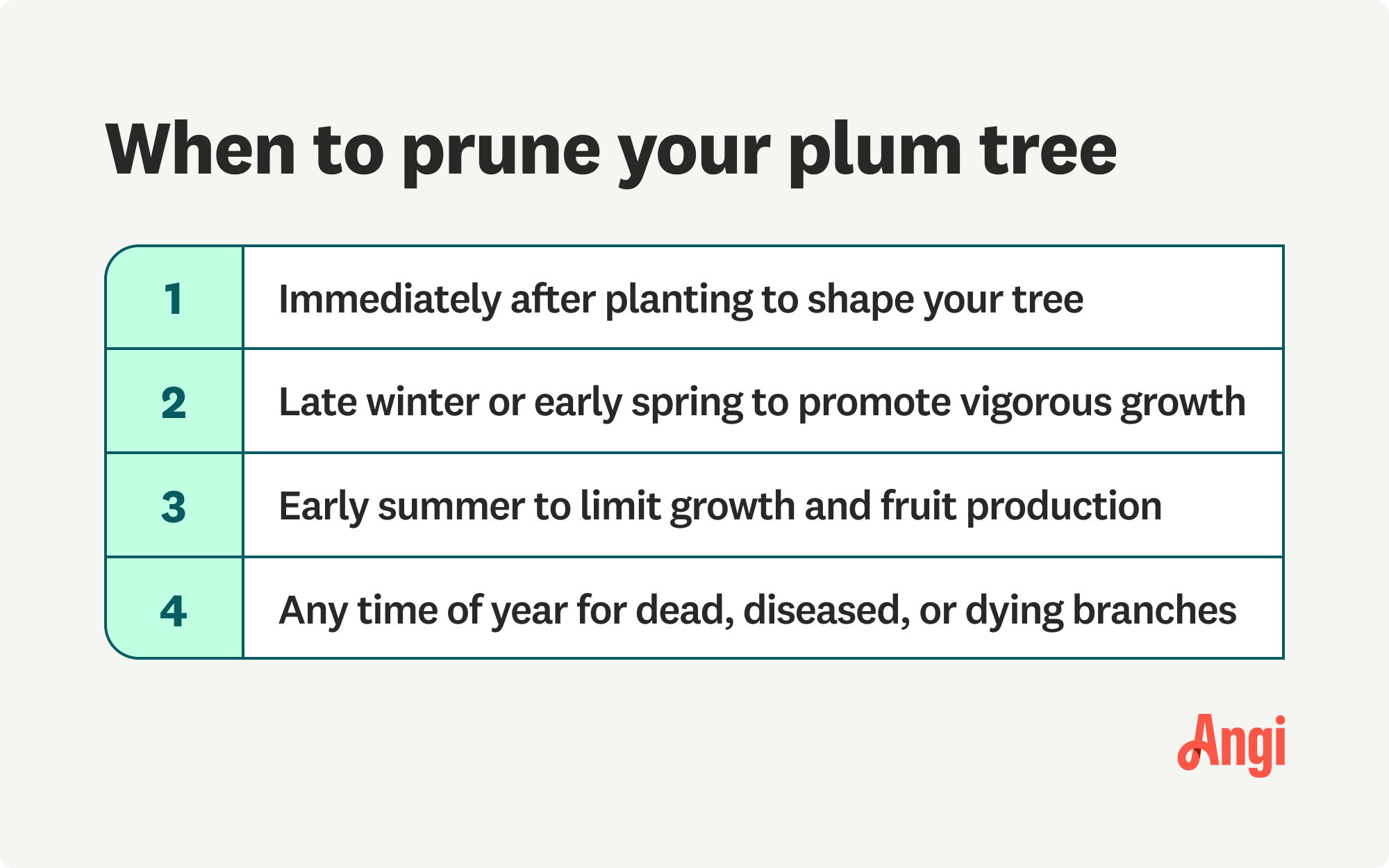
How to Prune a Plum Tree: the First 3 Years
Plum trees are typically grown in a vase or wine glass shape, meaning they have three to four main branches that extend from a shorter central trunk (though some people shape European plum trees more like a pyramid, with one main trunk supporting multiple smaller branches). You’ll need to carefully prune your tree in the first three years to get the right shape.
Gather Your Tools
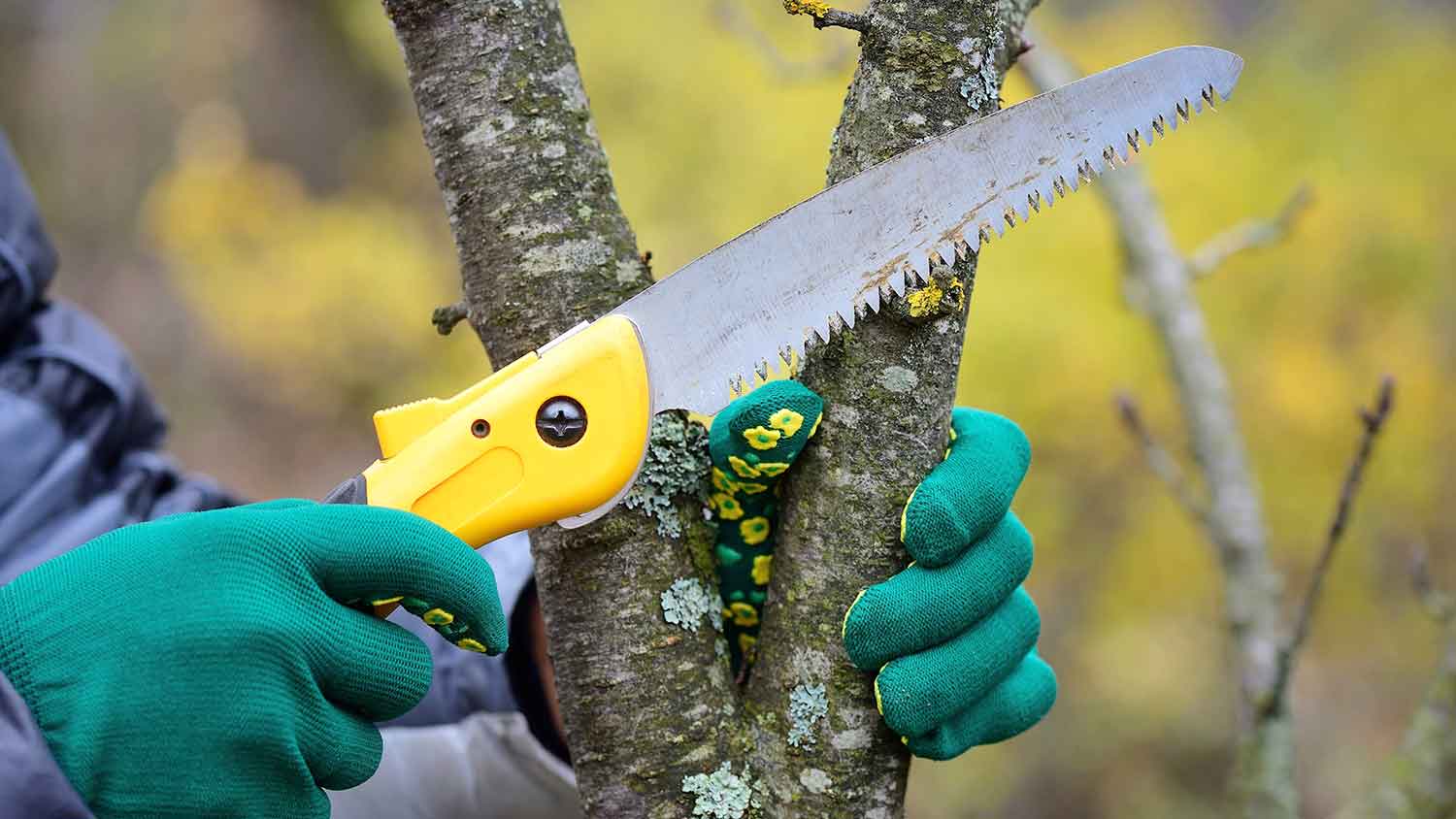
For any pruning job, you’ll need the right tree cutting tools. Typically, you can use smaller tools on a juvenile tree, but you’ll need to use heavier-duty tools on certain branches as it grows. Add the following tools to your tool kit:
Pruning shears: These are ideal for small, flexible branches.
Lopping shears: These will help you clip medium-sized woody branches.
Saw: This will help you cut large branches
Make sure your tools are clean and sharp to prevent the spread of disease and trauma to your branches.
Give Your Tree an Initial Shaping
When you first plant your tree, it will look like little more than a stick with some buds. You’ll need to trim back the central leader so it stands at 2 to 3 feet. The central leader is the main branch (aka. trunk) that will support the rest of the branches as they grow.
Use your lopping shears and cut the central leader right above a bud. Make sure at least three buds are remaining. These will eventually grow into branches.
Create a Scaffold Whorl
Once your branches grow a few inches, you’ll need to create a scaffold whorl. This group of main branches extends from the central leader and acts as scaffolding, providing structure to your tree. To create the scaffold whorl, choose three to four branches that are:
Large and healthy
Evenly spaced
At an angle of around 45 degrees from the central leader
Use your lopping shears to remove the rest of the branches.
Trim Your Scaffolding Whorl
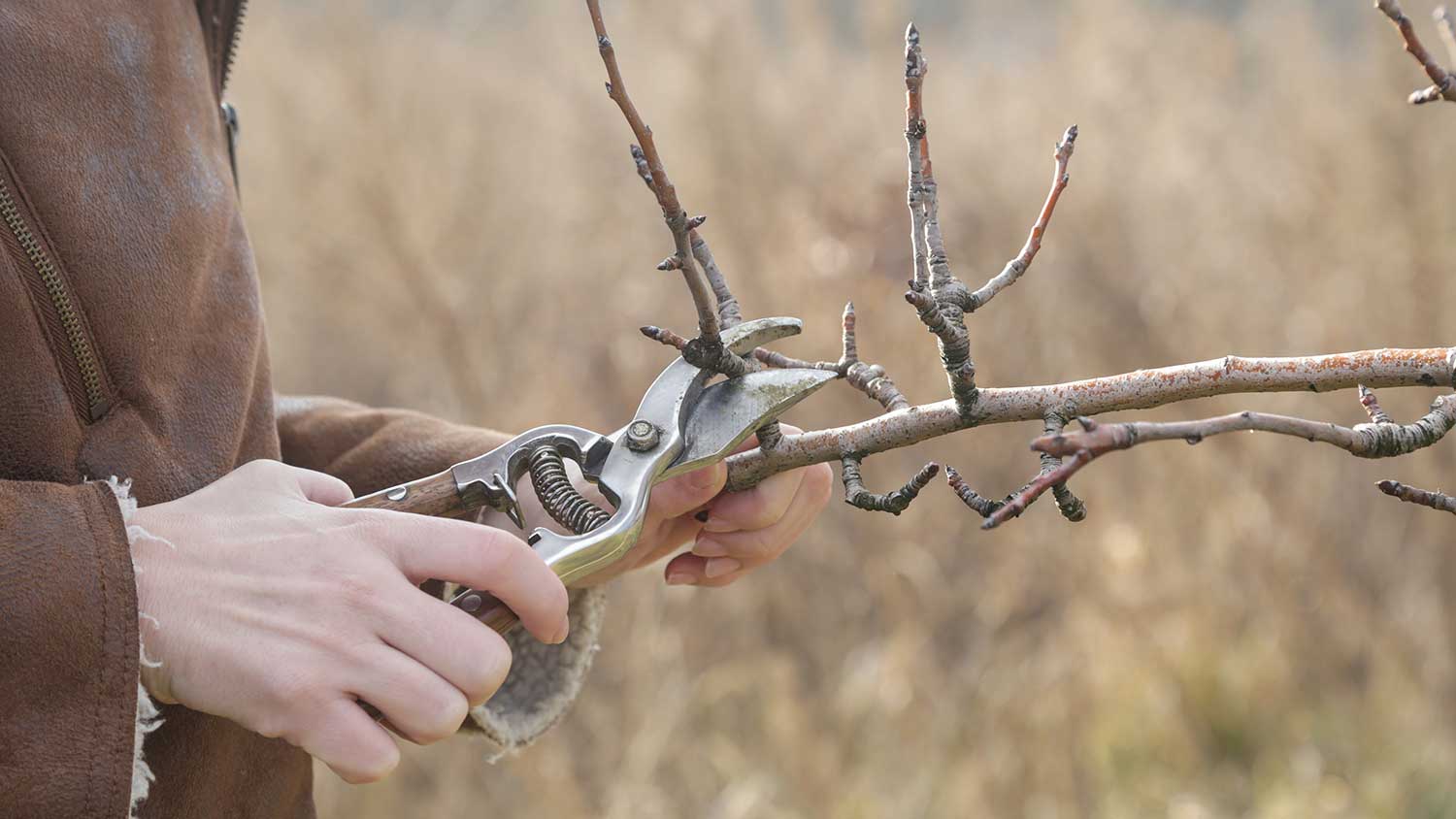
During the first two years, you’ll need to trim your scaffold whorl to encourage healthy growth. While the tree is still dormant, cut back the branches so they’re around 10 inches long. Always cut right above a healthy bud at a 45-degree angle.
Remove Dead, Dying, or Diseased Foliage
Remove dead, dying, or diseased branches as soon as they crop up. This step will encourage healthy growth, so your tree doesn’t waste energy trying to maintain unhealthy branches.
How to Prune a Plum Tree: Years 3–5
In years three through five, you’ll focus on creating your plum tree’s shape. Pruning during this time will give your tree a solid foundation to grow fruit for years to come. Keep the shape in mind when you choose which branches to prune.
Cut the Trunk
Each year, you’ll need to trim back the central leader by 1 to 2 feet, which will encourage bushy—rather than tall—growth. Choose a spot above a healthy bud, and carefully use your saw or loppers to snip off the top of the trunk. Don’t attempt this job if you’re unsure that you can do so safely.
Create More Scaffolding Whorls
Until your plum tree reaches its desired height, create additional scaffolding whorls from healthy, vigorous branches. Once your tree starts growing fruit, remove unproductive branches that did not grow fruit the previous year.
Remove Dead, Dying, or Diseased Foliage
Continue to remove dead, dying, or diseased foliage as it pops up throughout the year.
How to Prune a Plum Tree: Mature, Established Trees
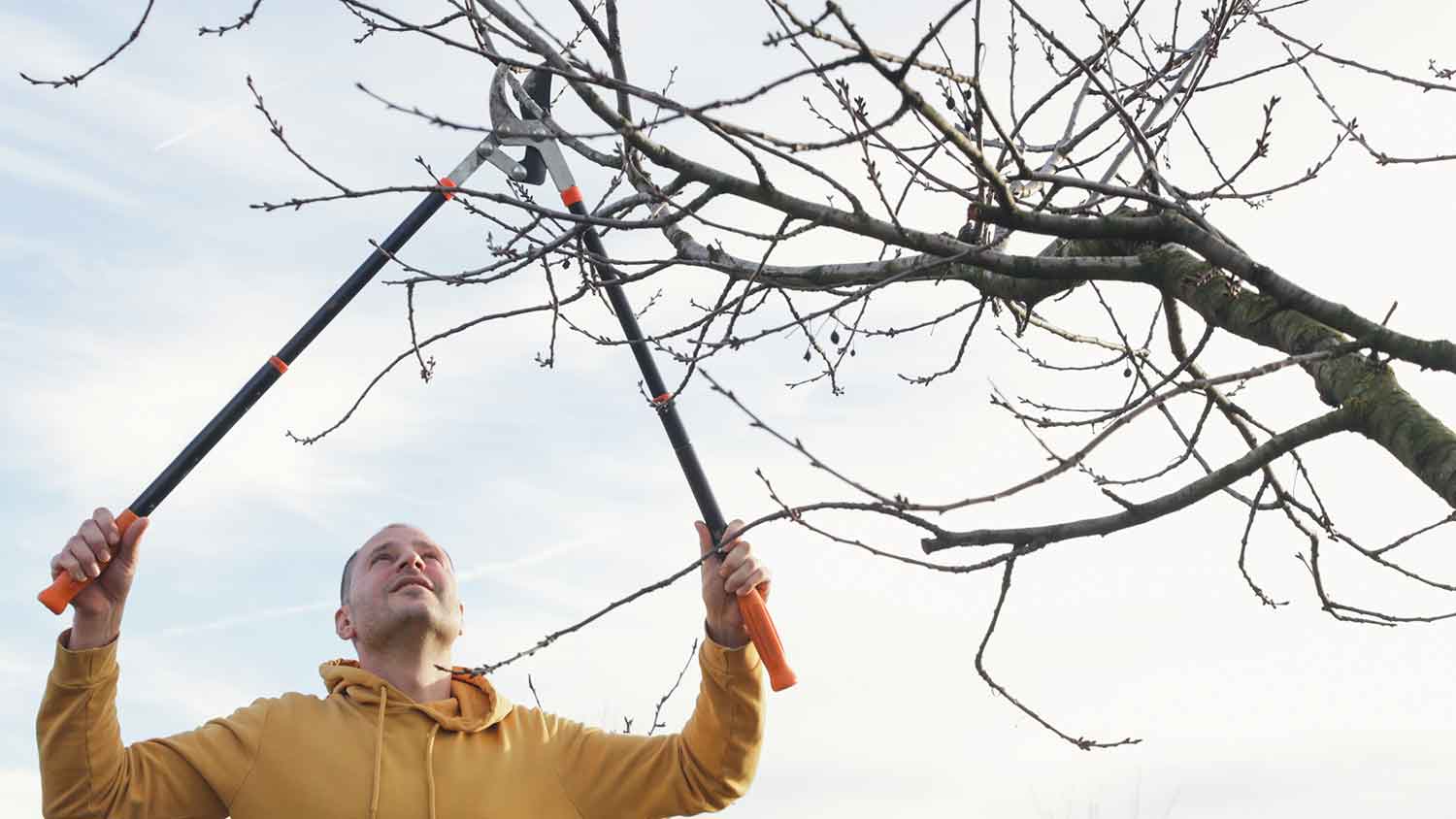
Once your tree is established, pruning should be a little more straightforward. Do not prune any branches that produced fruit over the last year. Instead, focus on trimming unproductive branches.
Thin Out Your Tree
There are a few benefits to thinning out your tree. By removing unproductive foliage, your tree can divert its energy into fruit production. It also increases airflow (which staves off disease and insect infestation) and allows sunlight to penetrate the canopy (hello, healthy harvest). Thin out your tree by pruning away branches that:
Cross over other branches
Grow downward
Grow towards the center of your tree
Appear weak
Didn’t produce fruit the previous year
Remove Suckers and Water Sprouts
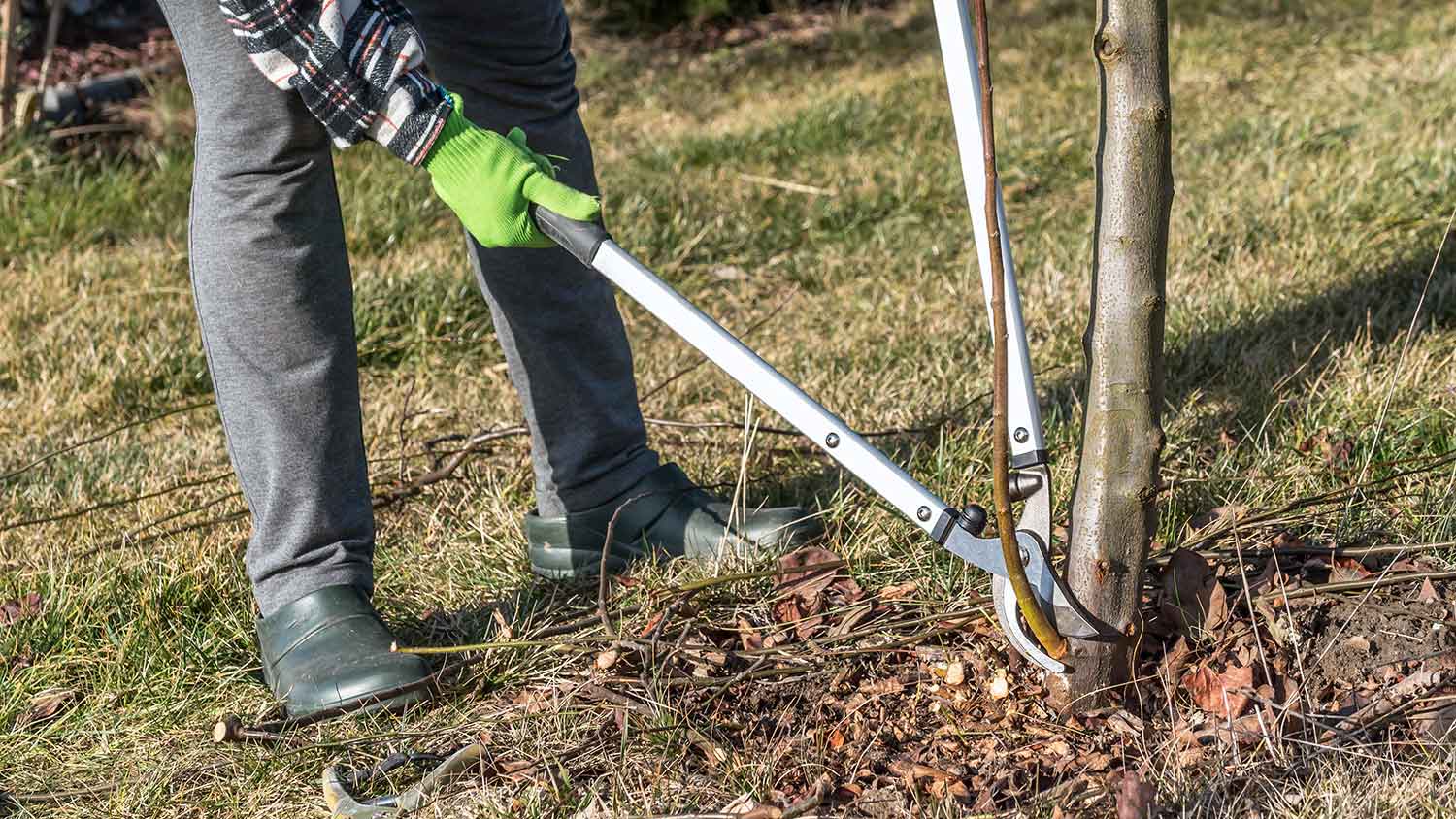
Suckers are small branches that grow out of the base of your tree. Water sprouts are thin shoots that grow upright from large branches. None of this growth will ever produce fruit. Cut it away using your shears and loppers.
Cut the Trunk
Your trunk should never stand more than 3 feet taller than the highest branch. During each pruning season, assess the height of the central leader and trim as needed. Remember that too big of a crop can kill your tree if it’s overgrown.
Trim Side Shoots
Each pruning cut you made the previous year should have produced new shoots. Trim these side shoots, so they’re six leaves in length. Doing so will encourage fruit production the following year. Use your shears and make a 45-degree cut right above a bud.
Remove Dead, Dying, or Diseased Foliage
Continue to remove dead, dying, or diseased foliage as it pops up throughout the year.
Tips for Pruning Plum Trees
Plum trees are slow growing, so it will take time to see results. This process can feel frustrating, but patience pays off with delicious plums you’ll enjoy for years to come. These helpful pruning tips will get you started:
Limit pruning to late winter, spring, or summer to avoid silver leaf disease.
Sterilize your cutting tools to prevent the spread of disease and bacteria.
Since cleaner cuts generally heal better, keep your cutting tools sharp.
If your tree is severely neglected, spread pruning tasks over several years.
Don’t prune more than 25–30% of a tree’s foliage at one time.
Use pruning sealer on large cuts to prevent infection.
DIY vs. Hire a Pro
Plum trees are ideal for a small yard, but they’re relatively high maintenance. You’ll still have to prune them annually to limit their size and encourage a hearty—but not too hearty—harvest. It’s no beginner's task, especially if your tree is severely overgrown, but many homeowners don’t mind rolling up their sleeves.
That said, rather than risk trial and error, you may want to hire a local arborist or tree trimming service near you. Plum trees can develop issues like silver leaf disease. Some varieties can’t produce fruit without a pollinator—so you’ll need to plant a compatible tree alongside it. At the very least, a professional can help put you on the right track.
Frequently Asked Questions
Most plum trees are pruned into a vase or open wine glass shape. They’ll have a shorter central leader (the trunk) that supports three to four main branches. Of course, this isn't always the case. If you have a European plum tree, you can grow it in a pyramid shape. Let the central leader extend the length of the tree and prune smaller branches to create the pyramid.
Generally, you’ll want to prune back the trunk by 1 to 2 feet each year to promote bushy growth. Doing so concentrates vegetative buds closer to the bottom of the tree, where you can easily harvest fruit. For side shoots that are a year old, leave at least six leaves.
Never remove more than 30% of a tree’s foliage during pruning—even if your tree is really overgrown. Removing this much foliage at a time could kill your tree.
Completely topping a plum tree is a risky business. Cut too much, and you’ll kill your tree. That said, you do need to trim the top of your tree to encourage bushy growth, maintain your tree’s vase shape, and limit size.
A plum tree's central leader (or trunk) should never extend more than 3 feet above the highest branch. When you first plant your tree, cut the central leader so it’s 2 to 3 feet tall. As it grows, cut it back 12 to 20 inches until it reaches its desired height. Never prune more than one-third of the new growth.

